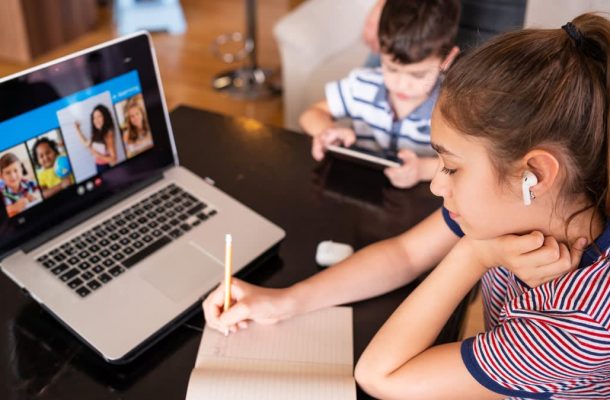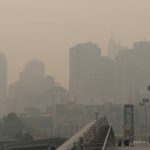As many families and schools look forward to returning to face-to-face teaching, we need to take stock and prepare ourselves for the possibility of further bouts of remote home schooling.
The gradual reopening of schools and resumption of face-to-face teaching is giving us a glimmer of hope that our lives are headed back towards more familiar territory.
In particular, many politicians, teachers, students and parents are understandably pleased to be moving on from the emergency forms of remote schooling that most of the world has experienced over the past few months.
However, it may well be that the home-based schooling many of us have just experienced during March, April and May is something that we need to get used to. While people are understandably relieved to be coming out of lockdown, there has been surprisingly little talk of the likely ongoing and recurrent nature of these educational disruptions.
While schools might already be reconvening around the world in fits and starts, large numbers of school students will be continuing to learn on a remote basis for some time to come. Indeed, until the pandemic has finally come under control, then the practicalities of students attending face-to-face schooling will be highly contingent and uncertain.
Of course, it’s impossible to be sure how the pandemic will play out in different countries, but it seems sensible to not discount the possibility that these initial periods of shutdown might be followed by others. Individual schools might well be required to revert to remote teaching as soon as local cases surface in their immediate communities. In the event of subsequent waves of the pandemic, large numbers of schools and families could find themselves thrust back into home-based schooling conditions.

Even if we escape a repetition of any wide-scale school shutdowns during the remainder of this current pandemic, there is a range of other emergencies and crises that might pose an increasing threat to the stability of face-to-face schooling.
Communities hit by increasing spates of bushfires, flooding and other natural crises might well have to resort to similar switches to remote schooling. While the educational disruptions that this generation of schoolchildren are experiencing might seem unprecedented, it might well not be a once-in-a-lifetime experience.
If this is not the last that we’ve seen of large numbers of school students having to learn at home through remote education, then it makes sense to be now setting about preparing ourselves for the next round of home-based learning.
The high cost of school shutdowns
Clearly, the past few months have seen teachers, students, families and schools making huge efforts to get by the best that they can. Indeed, seeing entire school communities swing into collective action at short notice has been one of the few heartening episodes in what has otherwise been a fraught time for our education systems.
Yet, this opening wave of school shutdowns has come at a notable cost. Many families and schools are now exhausted. Most seriously, there have been huge differentials between what different schools and households have been able to achieve.
As such, the prospect of having to go through this all again in the near future should be prompting conversations about what needs to be done differently next time. For sure, there have been plenty of success stories from the current lockdowns that are worth supporting and sustaining. But also, there’s a need to call out the professional practices and institutional procedures that clearly fell short.
For example, is it really desirable for teachers to be live-streaming online classes all day? Which schools and households have particularly struggled to maintain the basic levels of remote schooling, and what might be needed to support them in the future?
While we might be currently lacking the inclination and the energy, there’s a pressing need to instigate debriefs and audits that thoroughly account for everything that’s just taken place.
There’s still an understandable reluctance to appear too critical of the huge efforts that have taken place over the past few months. Nevertheless, now is the time to begin methodically identifying what went well (and what did not), all with the goal of preparing better for next time. This process needs to take place within individual school communities, as well as at the system-wide level.
Time to take stock, and plan
So, now is the time for schools, families and policymakers to reflect on their successes and mistakes, and to learn from the experience of others in comparable circumstances. Then, armed with all this evidence, we can plan for the next time it becomes necessary to pivot to emergency remote schooling.
This will undoubtedly throw up a range of challenges that need to be worked through. For example:
-
What scope is there to develop rapid (but robust) professional learning for teachers faced with the prospect of switching to unplanned remote teaching?
-
How can teachers, parents and others share their current remote schooling experiences and best/worst practice in a way that’s honest and constructive?
-
What scope is there for better advice and training for families? What systems of support and resourcing can be established for households that find themselves recast as places of schooling?
-
What additional infrastructure (digital and non-digital) needs to be put into place – both in schools, and in the homes of students and their teachers?
-
What guidelines and policies need to be developed in regard to data privacy, child protection, technology governance and accountability?
There will be plenty more than these five points to think through, but the easing of the current lockdowns does provide us with a valuable period of respite to start this process of reflection and planning in earnest.
Amid the understandable relief of getting back into the classroom, teachers, parents, school leaders and policymakers still need to be thinking hard about the possibility of emergency remote teaching. The months ahead are clearly going to be uncertain for education – it makes sense to plan accordingly.














